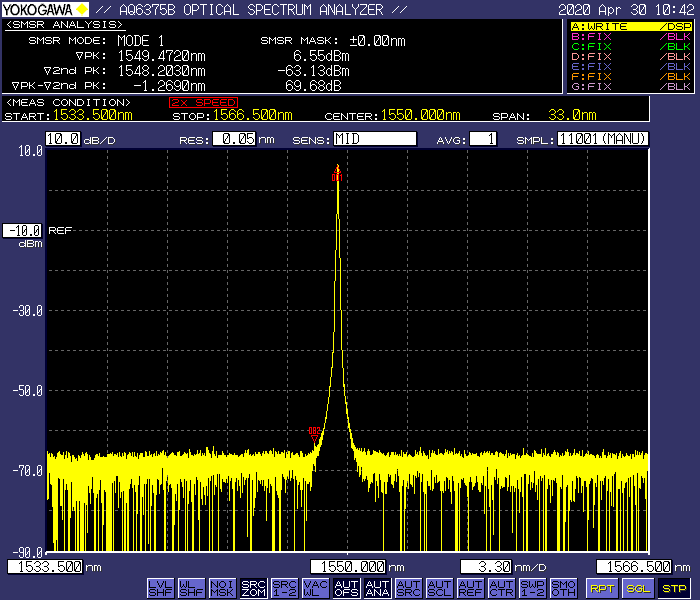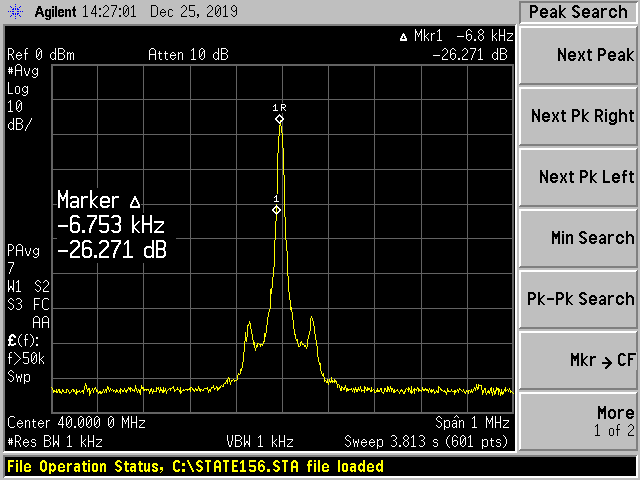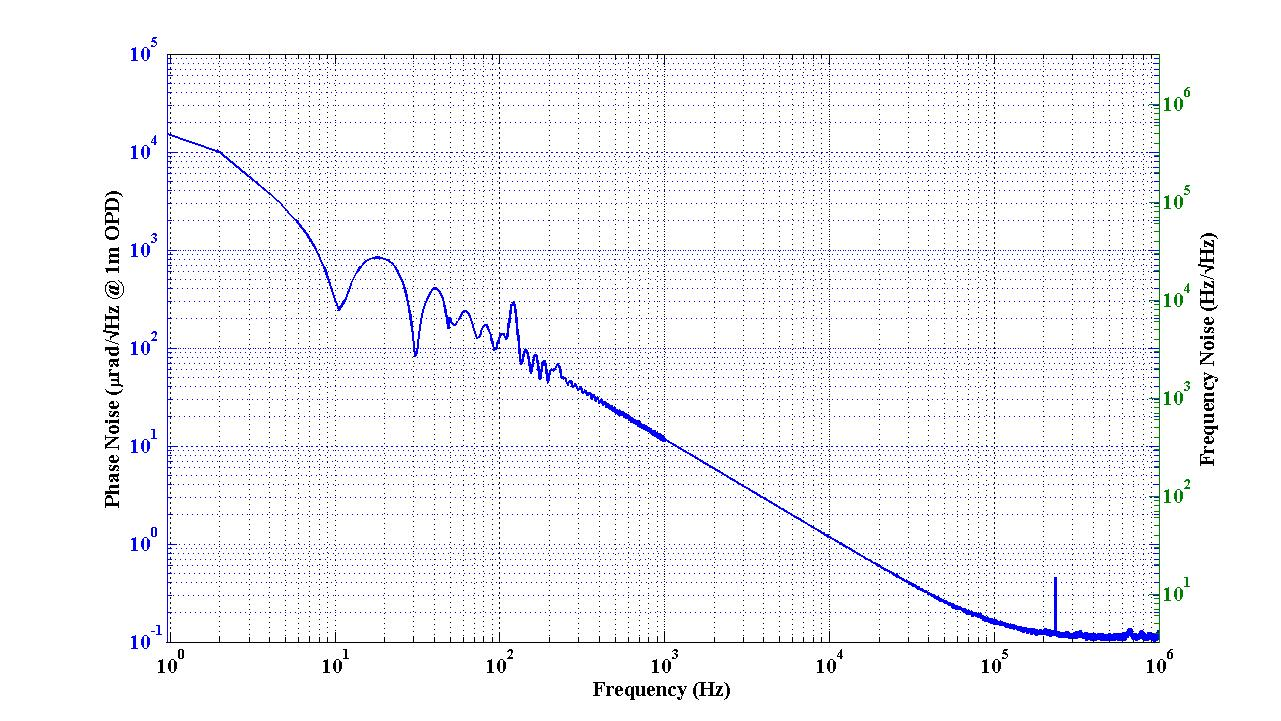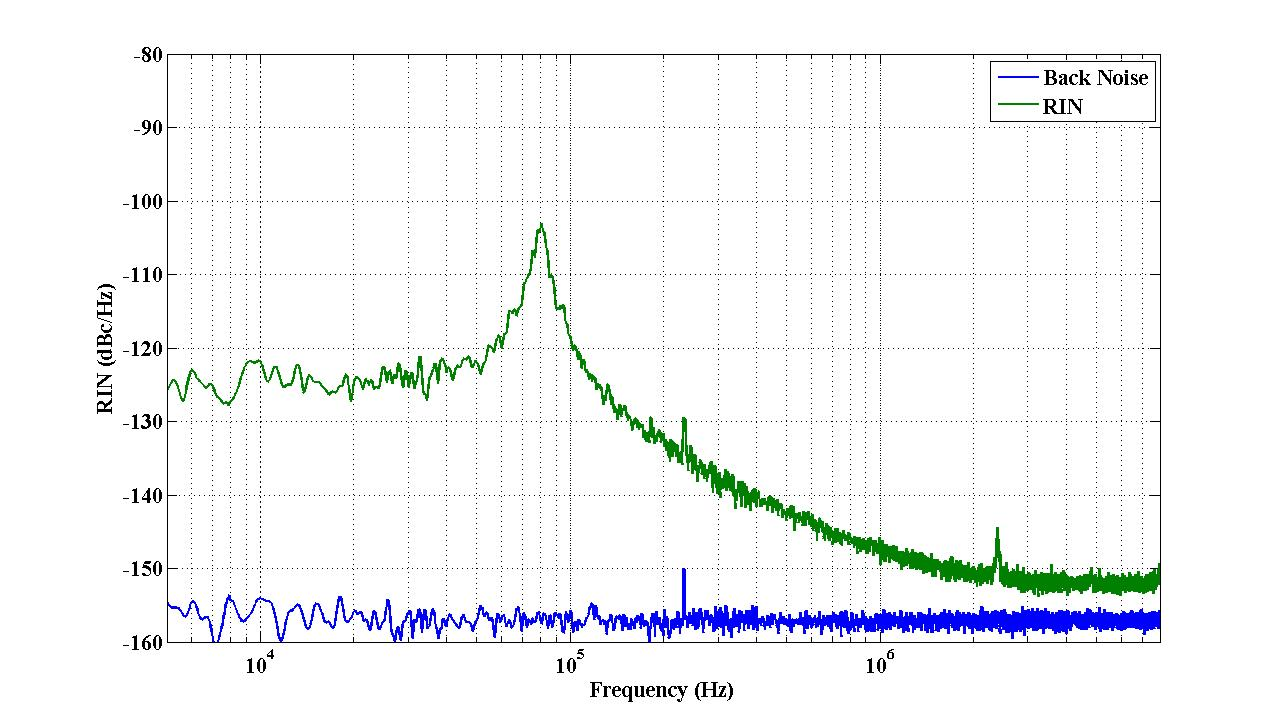Products
- Laser and Amplifier for LiDAR
- CoSF-D DFB Single Frequency Fiber Laser
- CoSF-R Optimized Ring Cavity Single Frequency Fiber Laser
- Pulsed Fiber Laser
- CW Fiber Laser
- Pulsed Fiber Amplifier
- CW Fiber Amplifier
- Laser Source
- Fiber Bragg Grating (FBG)
- Component and Subassembly
Search
Home > Products > CoSF-R Optimized Rin... > CoSF-R-ER > CoSF-R-ER-M Single ...

CoSF-R-ER-M Single Frequency Fiber Laser Module
Description:
Connet CoSF-R optimized traveling wave cavity ultra-narrow linewidth single-frequency fiber laser is a low-noise ultra-narrow linewidth fiber laser independently developed by patented technology. CoSF-R single-frequency fiber laser uses a unique "optimized traveling wave cavity". The design eliminates the standing wave space hole burning phenomenon which is easy to occur in the linear cavity fiber laser. In conjunction with the ultra-narrow bandwidth fiber filter designed by Connet, the single longitudinal mode output is selected and the single frequency operation of the fiber laser is guaranteed. The polarization control technology eliminates the polarization hole burning effect based on the all-fiber design, thereby achieving stable linear polarization, single longitudinal mode, and ultra-narrow linewidth single-frequency laser output.
CoSF-R ultra-narrow linewidth single-frequency fiber laser has excellent performance with the linewidth of less than 1kHz, and the ultra-low phase noise and frequency noise. The ultra-long laser cavity design makes the overall noise level of CoSF-R significantly lower than other commercial short-cavity single frequency lasers.
CoSF-R-ER-M works in the 1.5um band and the output power of the basic module is optional from 5mW to 200mW. Higher output power products can be provided on request. The standard wavelength is 1550.12nm with the wavelength being optional in the range of 1535-1605nm, such as the standard wavelength under the ITU framework.
Features:
● Ultra-narrow linewidth <<1kHz
● Ultra-low phase noise and frequency noise
● Low relative intensity noise (RIN)
● Stable single frequency, single polarization output
● No mode-hopping
● Small sized package 175x130x29mm
● High reliability
Applications:
● Distributed optical fiber sensing
● Coherent LiDAR
● Fiber optic hydrophone
● Laser spectroscopy
● Coherent communication
● Gas absorption measurement
● Cold atomic physics
● Other scientific research
Specifications:
|
Parameter |
Unit |
Specification |
||
|
Min |
Typ. |
Max |
||
|
Part no. |
|
CoSF-R-ER-M |
||
|
Center wavelength |
nm |
1530-1572nm fixed, other specify |
||
|
Output power |
mW |
5 |
- |
100 |
|
Laser output |
|
CW, Single frequency & Single longitudinal mode |
||
|
Beam quality |
M2 |
- |
1.05 |
1.1 |
|
Linewidth |
kHz |
- |
- |
<<1 |
|
RIN peak frequency |
kHz |
40 |
70 |
100 |
|
RIN peak |
dBc/Hz |
- |
-105 |
-95 |
|
RIN @10MHz |
dBc/Hz |
- |
-150 |
-140 |
|
Phase noise (1m OPD) |
urad/√Hz |
100@10Hz |
||
|
urad/√Hz |
0.6@10kHz |
|||
|
urad/√Hz |
0.1@100kHz |
|||
|
SMSR (50pm resolution) |
dB |
60 |
>70 |
- |
|
Output polarization |
|
Linear |
||
|
Polarization extinction ratio (PER) |
dB |
20 |
23 |
- |
|
Output power stability |
% |
- |
0.5 |
1 |
|
Output isolation |
dB |
50 |
- |
- |
|
Wavelength thermal tuning |
nm |
0.6 |
0.8 |
1.0 |
|
PZT wavelength modulation |
|
Optional |
||
|
Modulation frequency (linear) |
kHz |
DC |
10 |
20 |
|
Modulation wavelength range |
GHz |
- |
>8 |
>10 |
|
Operating temperature |
℃ |
0 |
- |
60 |
|
Storage temperature |
℃ |
-40 |
- |
85 |
|
Power supply |
VDC |
12 |
||
|
Communication interface |
|
RS485 |
||
|
Output fiber type |
|
Panda PM1550 |
||
|
Output fiber length |
m |
> 0.5 |
||
|
Optical connector |
|
FC/APC |
||
|
Dimension |
mm |
175x130x29 |
||
|
Weight |
kg |
<0.5 |
||
Ordering Information:
CoSF-R-ER-M-<15xx>-<PW>-PMF/SMF-PZT-FA
PW: Output power, 5mW is fixed, 50mW and 100mW output power are adjustable
Options: 1. SMF output 2. Monitoring output 3. PZT fast modulation
Typical Spectrum:

Linewidth:

Phase Noise & Frequency Noise:

Relative Intensity Noise (RIN):

Technical Notes:
1. Typical CoSF-R-ER-M spectrum SMSR>70dB. OSNR is much higher.
2. The linewidth of CoSF-R-ER-M can not be obtained directly from the beat spectrum of linewidth test based on unbalanced M-Z interferometer, which is limited by the resolution of the test platform. Its integral time is 240us.
3. The linewidth of CoSF-R-ER-M is calculated based on the power spectral density of frequency fluctuation.
4. Typical RIN test results do not include RIN suppression technology. For lower RIN level, please refer to CoSF-R-RS-ER-M.
5. The phase noise and frequency noise tests are based on the normal conditions of the laboratory room temperature, and no sound insulation, vibration isolation and other measures are taken.
download
Related Products
CoSF-R-ER-B-LP Ultra-narrow Linewidth Single Frequency Fiber Laser
CoSF-R-ER-B-MP Ultra-narrow Linewidth Single Frequency Fiber Laser
CoSF-R-ER-B-HP Ultra-narrow Linewidth Single Frequency Fiber Laser


